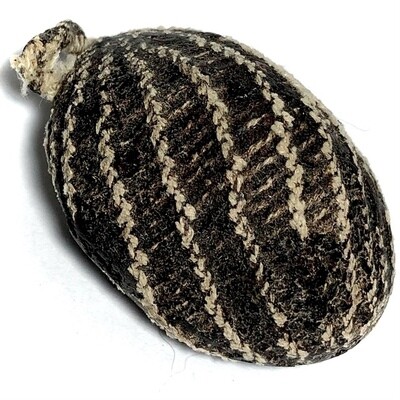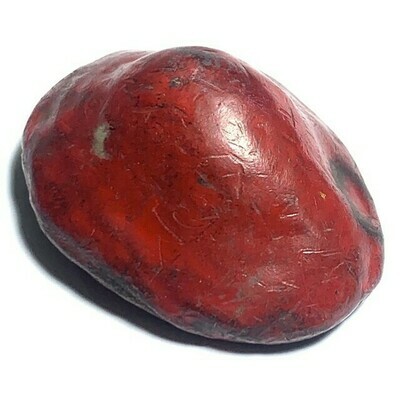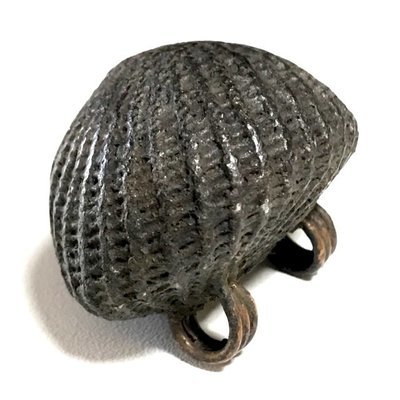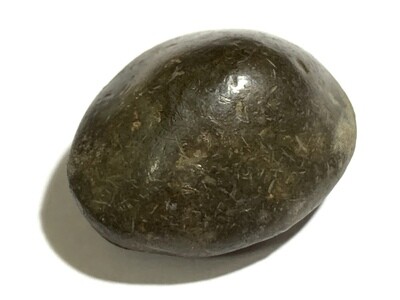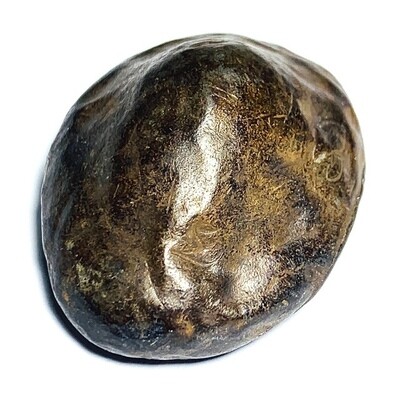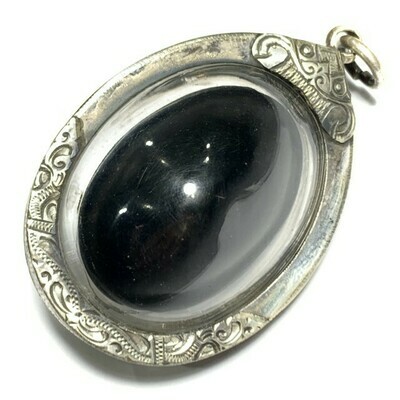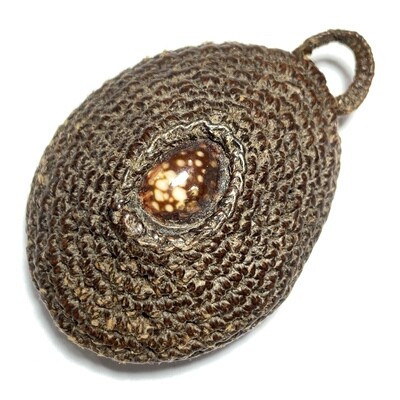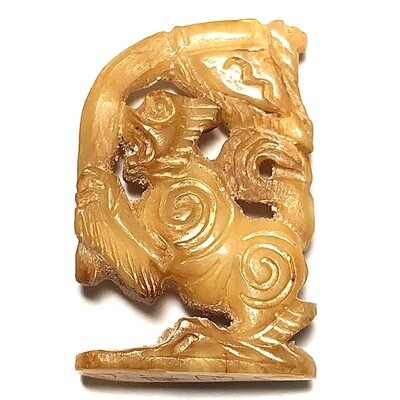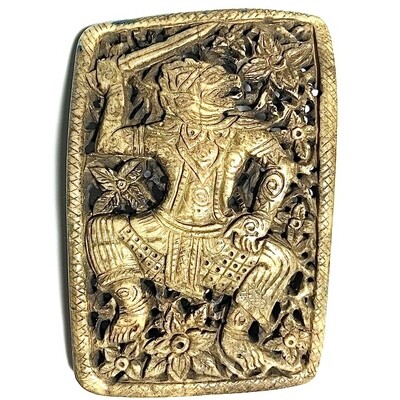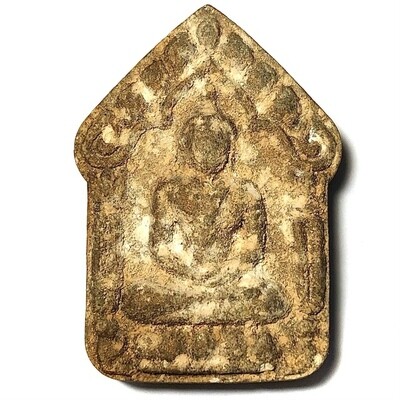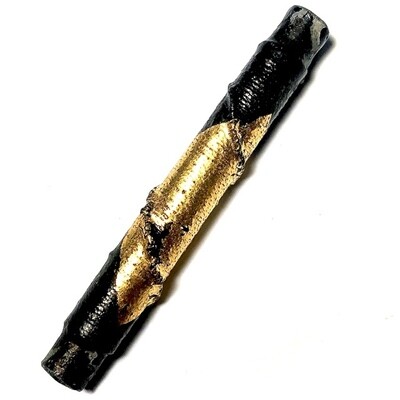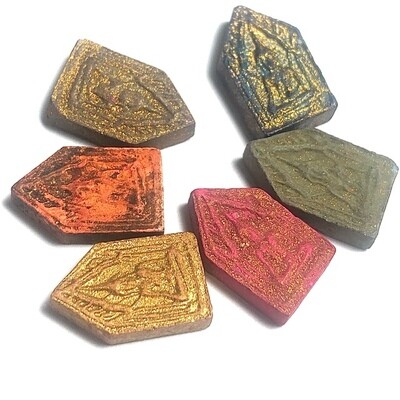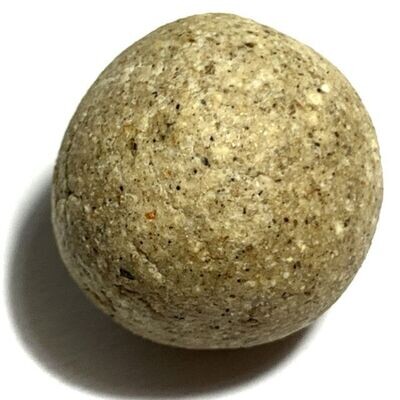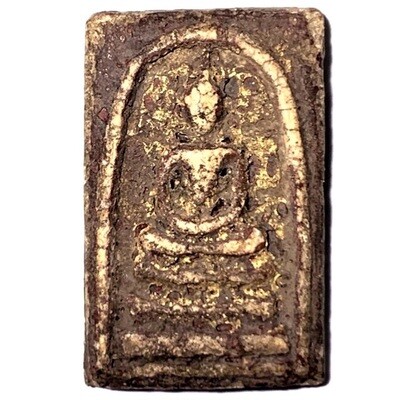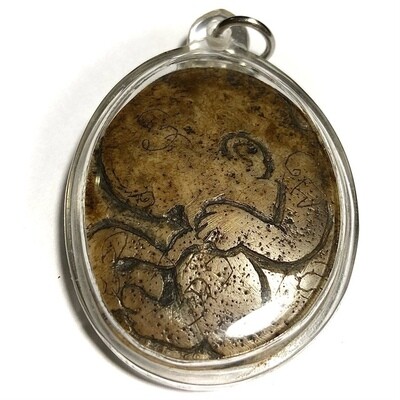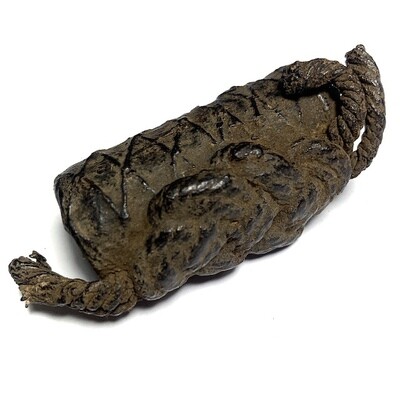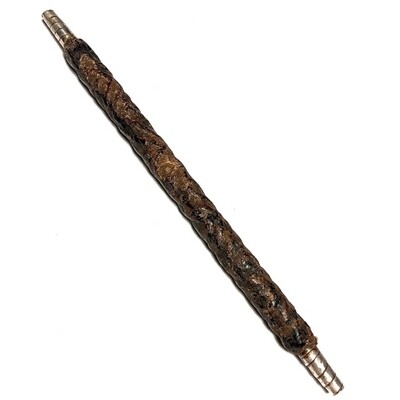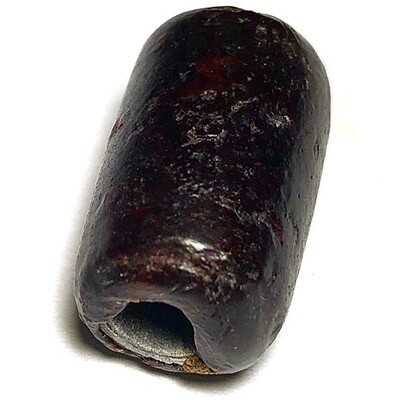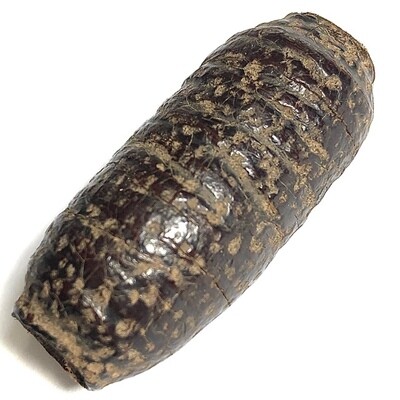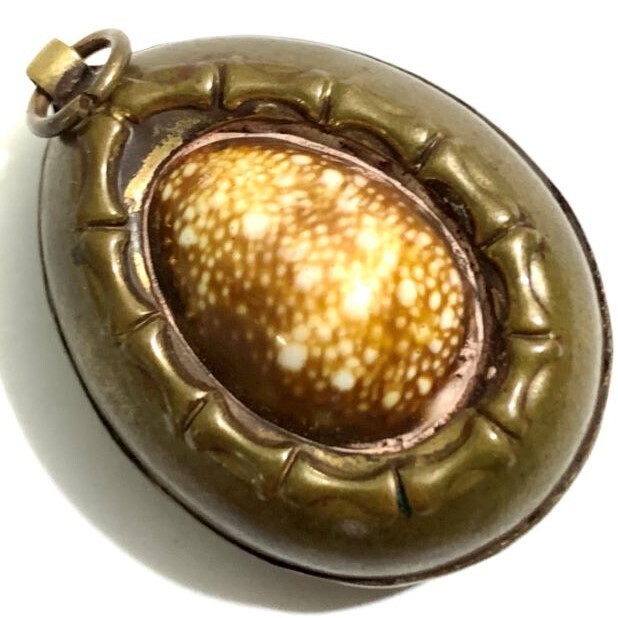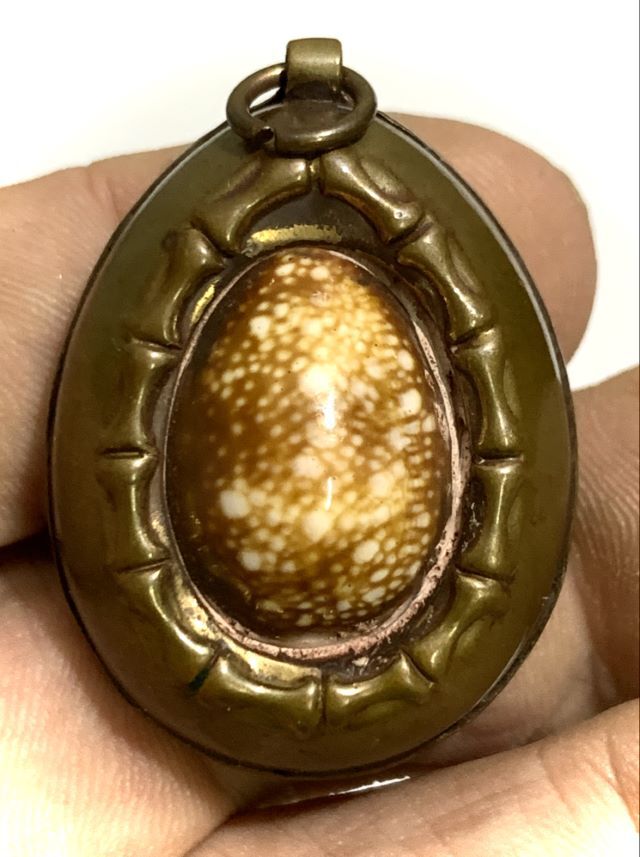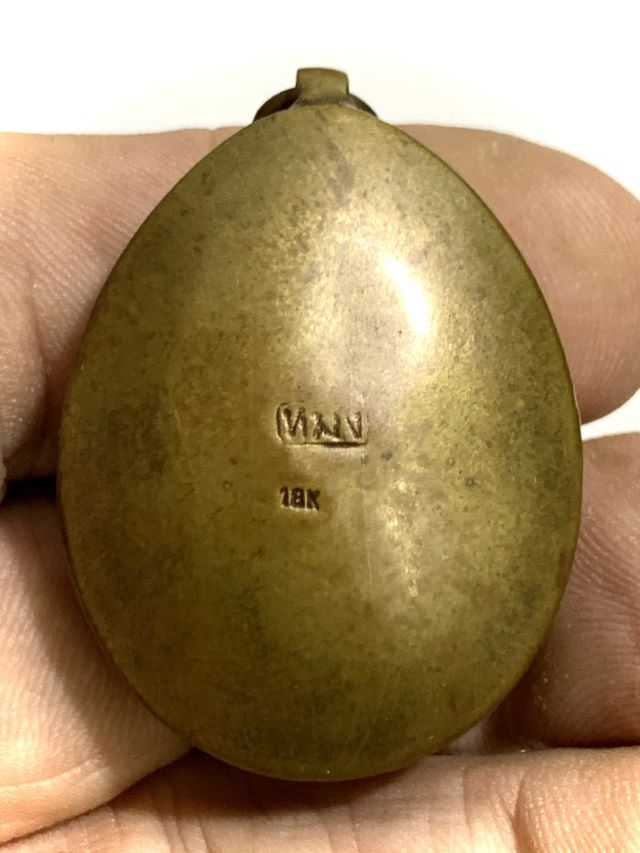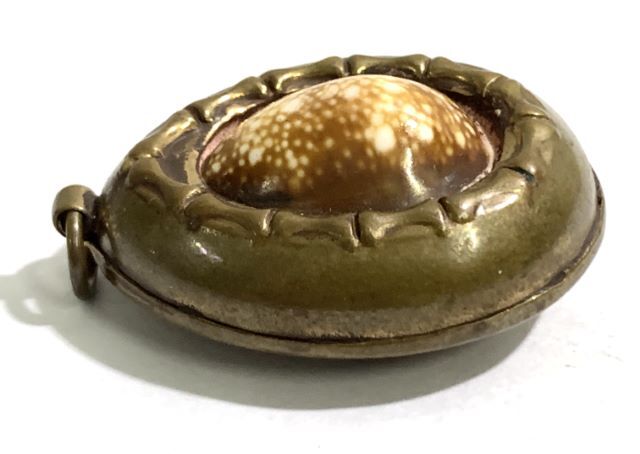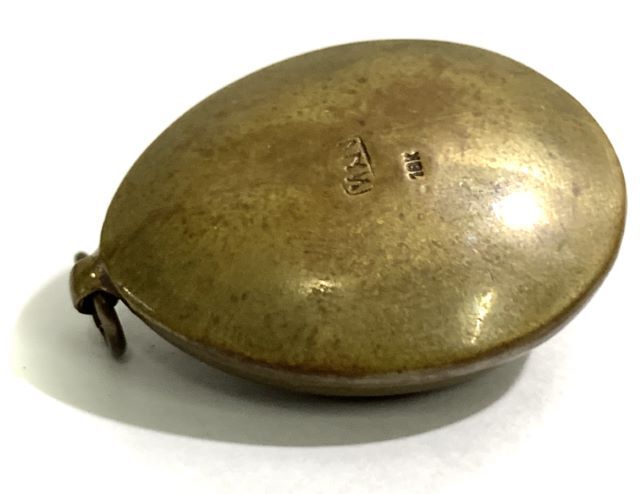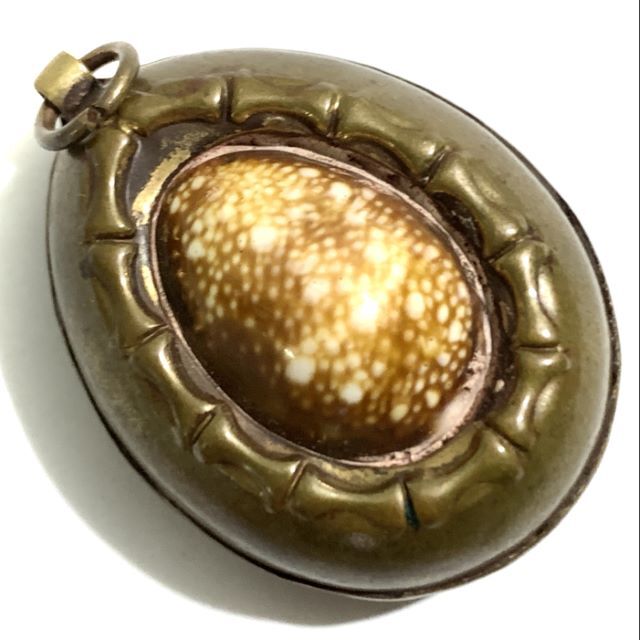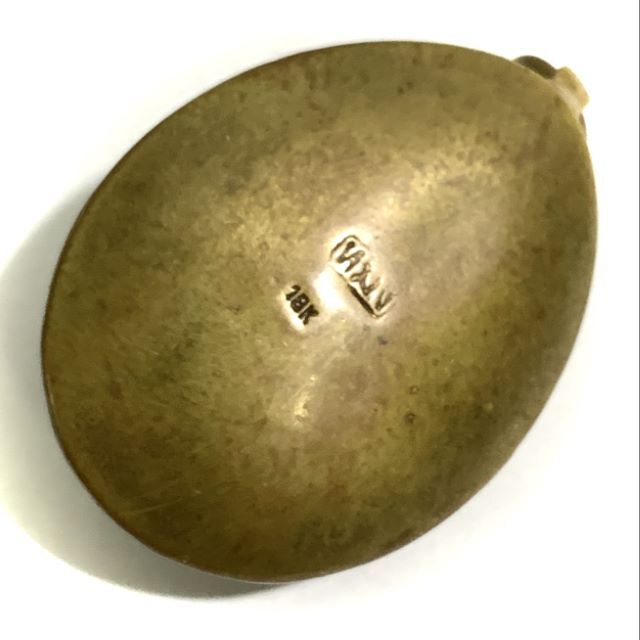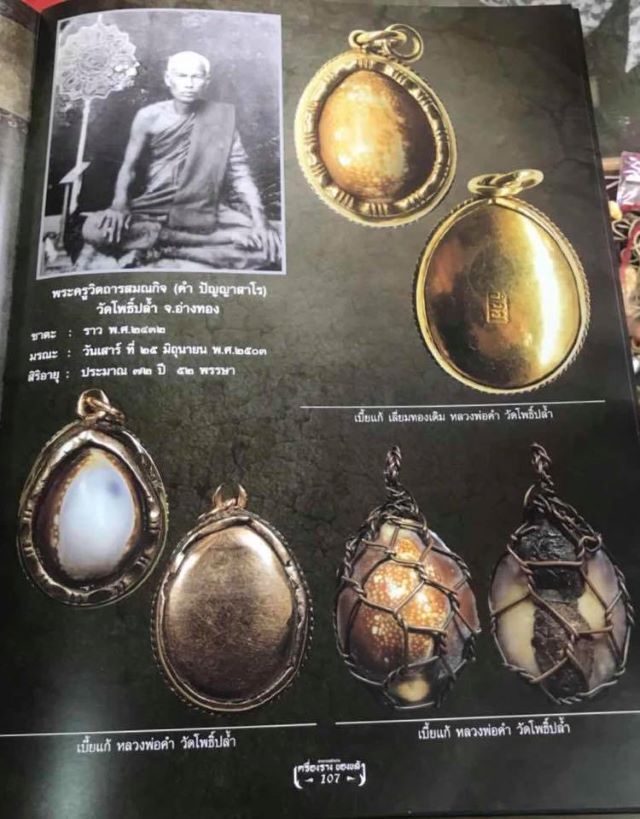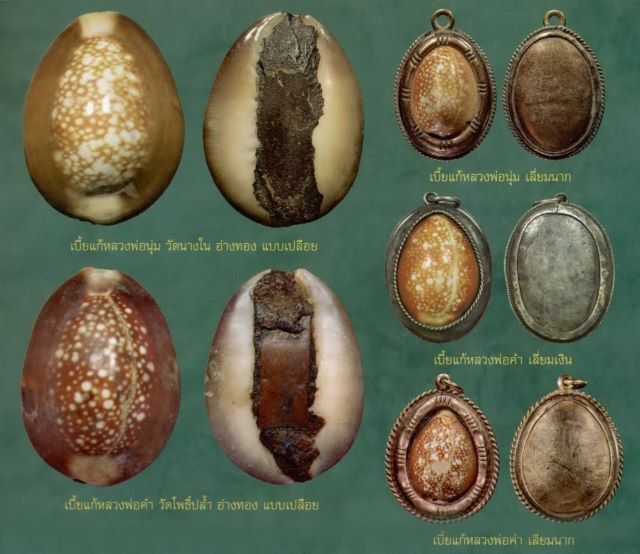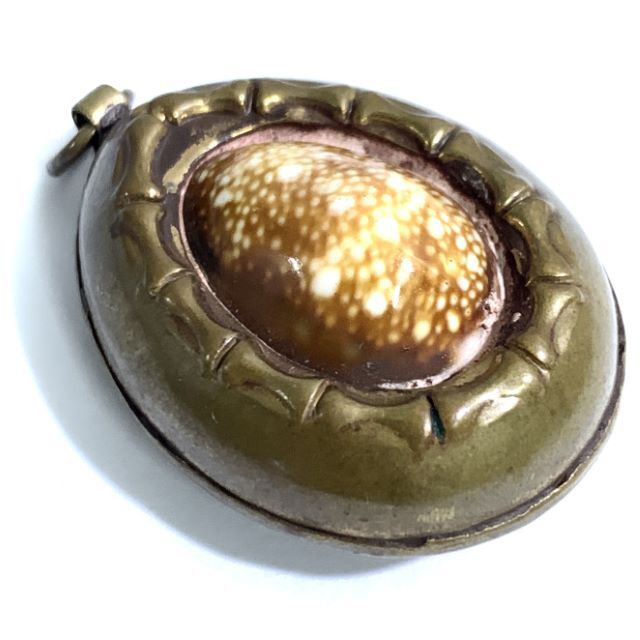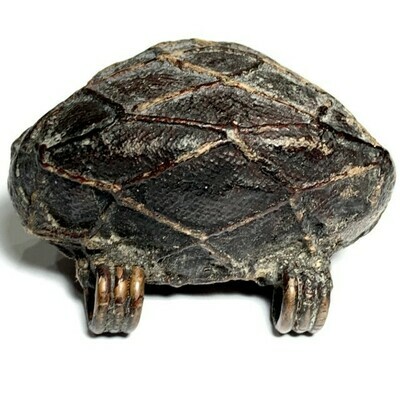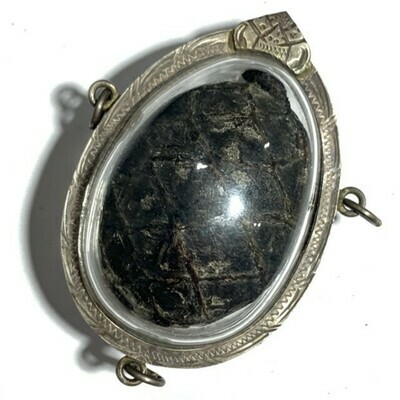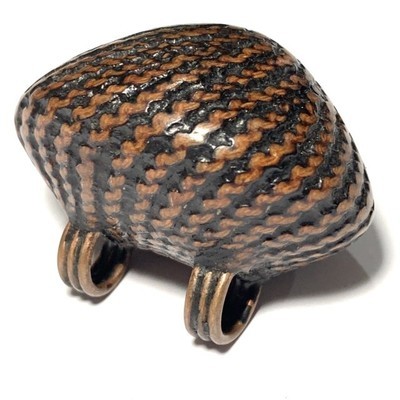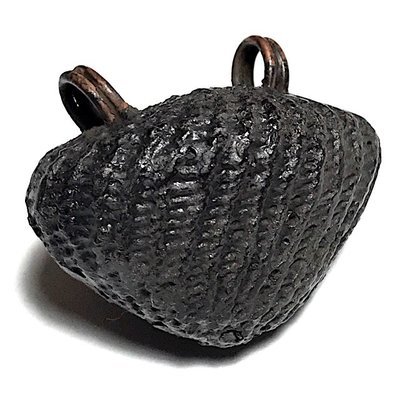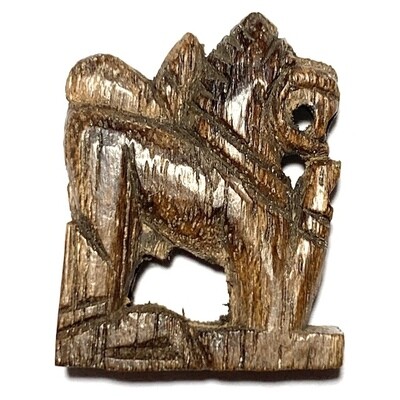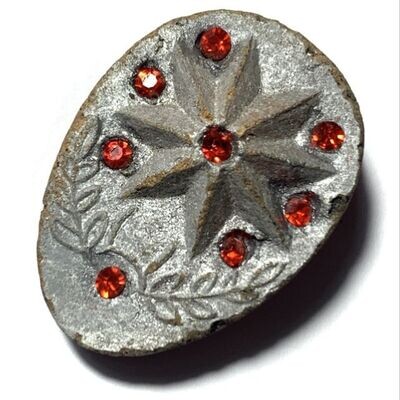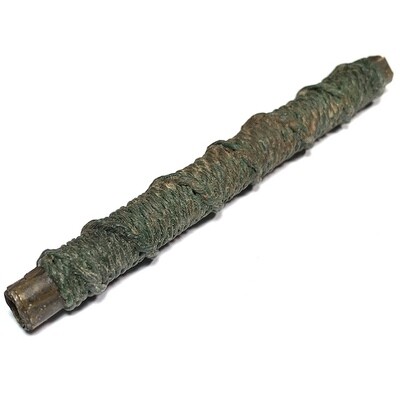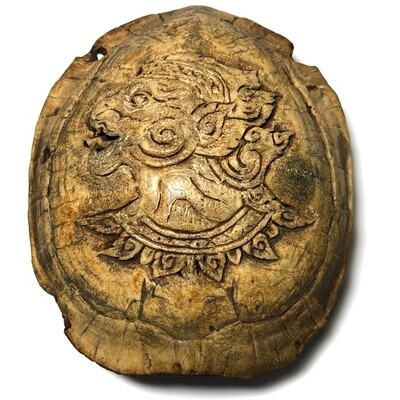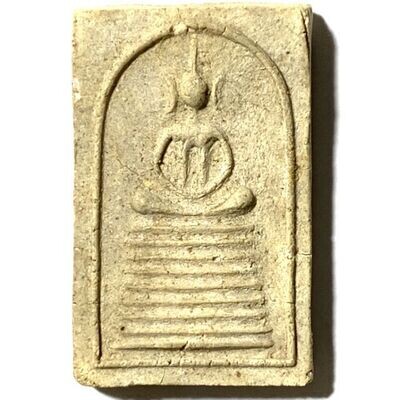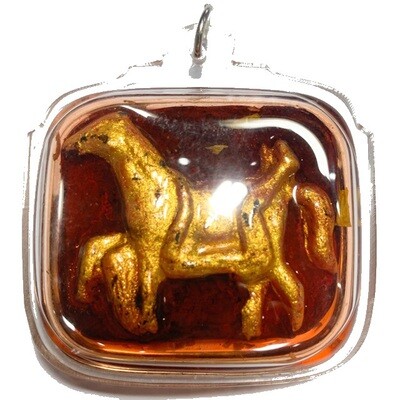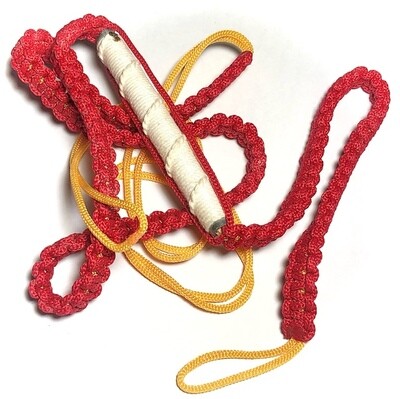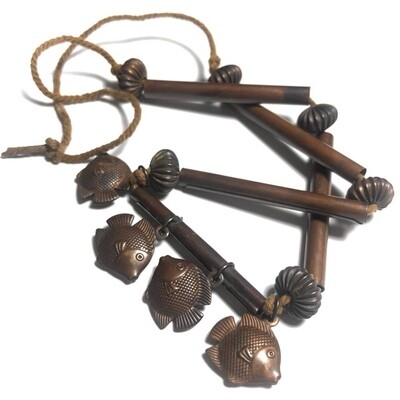Presenting a tiny but powerful and rare classic amulet from one of the Great Khao Or Masters of the 20th Century, Rian Glom Lek Hlang Chedi 2505 BE Nuea Tong Daeng Miniature Guru Monk Coin Por Tan Klai Wajasit
This Sacred amulet of the Great Khao Or Master of Nakorn Sri Tammarat, Master of Wat San Khan and Wat Pratat Noi, is a very rare amulet from Por Tan Klai’s 2505 BE Blessing Ceremony Edition, and is considered a ‘Jaek mae Krua’ type amulet (meaning ‘give to the kitchen maids and temple helpers’), which is suitable not only for men, but due to its miniature size, a perfect amulet for ladies or children to wear.

Rian Glom Lek 2505 BE Por Tan Klai Wajasit Wat Suan Khan
The 2505 BE edition of amulets of Por Tan Klai, is a highly preferred edition, which saw his famous ‘Rian Glom’ round Monk coin amulet with Chakra released, The Rian Glom Lek Hlang Chedi, and the Roop Tai Por Tan Klai Guru Monk Blesséd Photographamulets such as look om chan hmak and ya sen tobacco balls, and sacred powder amulets of various models.
A very rare and highly prized amulet for the devotees of Por Tan Klai to associate with his image and pray to him with a blessed image of the Guru, and the Chedi Relic Stupa on rear face for Buddhanussati and Marananussati. A powerful and Sacred amulet which has passed through the hands of the Guru and been blessed by him.
Por Tan Klai was one of the Top Guru Master Monks of the Last Century, and is considered one of the Four Great Masters of the Previous Generation of Lineage Masters of the Khao Or Southern Sorcery Lineage.
Kata Bucha Por Tan Klai
Bia Gae Aathan Mee Khorb Hum Luang Phu Kam Wat Po Bplam
The Bia Gae of Luang Phu Kam of Wat Po Bplam, in Ang Tong Province, is counted as one of the five 'Benjapakee' Bia Gae of all time, along with the other 4 being the Bia Gae of LP Rod (Wat Nai Roeng), LP Bun (Wat Klang Bang Gaew), Luang Por Perm (Wat Klang Bang Kaew) and Luang Por Pak (Wat Bote). It is believed by devotees, that the Bia Gae of Luang Phu Kam, have immense power to ward off demons, ghosts and evil eye spells, as well as dissovle curses, and protect against poisonous beasts, and jungle fevers. They are said to also possess Maha Ud Gunstopper magic, and Metta Maha Niyom Mercy Charm, that recalls good luck into one's life.
In the early era of his Bia Gae making, Luang Phu Kam would be able to get his 'Bia' cowrie shells from the local area around the temple, but after the year 2493 BE, as his Bia Gae became increasingly famous and renowned for their power, it became necessary to send devotees to places by the ocean, in order to find enough cowrie shells to satisfy the needs of devotees. As to the Channaroeng and Krang Pastes used to seal the Bia Gae, it was taken from stingless beesnests found in the forest. or taken from Jom PLuak giant termite nests which were found in the vicinity around the temple.
As the needs of devotees rose, there was not enough Muan Sarn available from these sources of magical ingredients, and Luang Phu Kam was forced to have to seek farther afield for the sacred ingredients necessary to continue making Bia Gae amulets in the numbers needed for his devotees.
The Bia Gae of Luang Phu Kam differ from those of other masters in their making method; Luang Pu Kam would smelt sacred leaden alloy in a pot until it liquified, and then pour it into the interior of bamboo sticks about one foot in length. The bamboo was then sealed with simple cloth, and the bamboo was quicly shaken and agitated. This would cause the cooling leaden sacred alloy to form into small pellets. These leaden pellets were then used to 'feed' the Parort Mercurial Metal. This caused the Mercury to make a different sound when shaking the Bia Gae, more like a rattle than a soft 'thud' from the mercury sliding around within interior of the Bia shell.
Luang Phu Kam would then take the Mercurial Alchemical substance and use Incantations to make the Parort Mercurial alloy flow into the Bia Gae shells. To do this, he would place the Bia Gae on a large tray, and use Ya Kaa grass to beat the tray whilst chanting Kata incantations, until the Parort Mercury would flow into the Bia shells of their own accord. Then they would be sealed with Chanaroeng, and a Takrut foil with Khom Agkhara inscriptions.
There are some special models, enclosed within a metallic casing, some oval with decorative borders, others shaped like a turtle. Very few special models (Dtua Kroo) were made, whereas most of them would be left bare, or cord wrapped with the shell poking out visibly. In the case of his Bia Gae that are not enclosed within metallic frames, the copper Takrut Tong Daeng is visibly affixed to the Channaroeng Paste which closes the mouth of the Bia shell. It is said that some devotees once removed the Parort Mercury, and that it was seen to glow with an aura, like neon light.
Once Luang Phu had finished the creation and primary empowerment process, he would take the Bia Gae into his Kuti hut and perform further solo empowerments in privacy.One can recognize the early, mid and later eras of Bia Gae, from the difference in Channaroeng paste found in the seal of the BIa.
Early era amulets will have Channaroeng paste from the stingless bee or the giant termite nests around the temple. Mid era ramulets have Channaroeng paste with Ya Ruea, a herbal paste often used by fishermen and sailors to seal their wooden boats against leakage with. The third and later era, is seen to be made from Ya Ruea mixed with Pong Ittijae Yantra powders.
Devotees would often take the Bia Gae of Luang Phu Kam to be specially framed at an artisan, and framed with gold, silver or other brazen metal type frames. The Artisans would always stamp the enclosure of the Bia Gae frame with the Thai letters 'Hor Mor Ngor' (หมง), or sometimes the word 'Kam' (คำ), or 'Heng' (เฮง). In the case of exhibits which have the word 'Heng' stamped on the frame, this was the name of the Artisan. In the case of exhibits that have the letters 'Hor Mor Ngor' (หมง), this was and still is the code stamp of the firm of the Hor Mor Ngor Artisans, who to this day still use the same Hor Mor Ngor stamp to encase amulets with custom metal frames.
